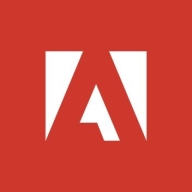

Adobe Workfront and Trello operate within the project management sector. Adobe Workfront appears to have an advantage in managing complex projects with its feature-rich platform, making it ideal for large enterprises, while Trello's user-friendliness and simplicity benefit smaller teams and individual projects.
Features: Adobe Workfront offers sophisticated resource management, customizable workflow automation, and real-time reporting. Trello provides a flexible card-based system, seamless app integration, and easy task tracking capabilities.
Room for Improvement: Adobe Workfront could benefit from simplifying its user interface to enhance accessibility for new users and reduce setup time. It also needs to expand its integration capabilities for broader compatibility and improve pricing transparency. Trello could add more advanced features to support complex project needs, improve scalability for enterprise-level use, and offer more robust reporting tools for enhanced analytics.
Ease of Deployment and Customer Service: Trello is easy to deploy with minimal setup, providing efficient customer service that aids quick problem resolution. Adobe Workfront, while requiring structured deployment, offers comprehensive customer support and training suitable for large-scale implementations.
Pricing and ROI: Adobe Workfront involves a higher upfront investment suited for larger organizations likely to see significant ROI from its comprehensive features. In contrast, Trello offers a cost-effective model with free and paid tiers, advantageous for smaller budgets and providing a faster return through its ease of use and customization.
We tracked all of the savings through Adobe Workfront, and at the end of the year, for those 2,500 users, we saved over 1,200 hours, or 1,200 man hours.
Sometimes we can have a back-and-forth conversation in the comments, which helps minimize some meetings.
They provide answers and guidance on how to resolve issues, such as clearing cookies and cache, and assist in best practice configuration and optimization of the platform.
It is considered a citizen admin system, and you don't need to be an IT professional to be an administrator.
If L5 does not understand, it moves to L4. If they can't solve it, it moves to a higher level.
We have gone from two or three marketing teams up to over 40 marketing teams and 6,500 users in a few years.
The solution is really scalable.
Adobe Workfront provides a stable foundation for project management.
Overall, I would rate the stability and reliability of Adobe Workfront a ten.
I have not faced any challenges with the stability of Adobe Workfront.
We can enhance integrations, such as ensuring Adobe Workfront integrates more seamlessly with other Adobe products like Experience Manager and Creative Cloud.
If I have issue-level data and project-level data that I need to see, with some custom coding, you can do some of it in a report, but in general, if you have a lot of that blended data between levels, you need to use a dashboard, which requires two different reports due to the difficulty in pulling data at the different levels into one thing.
Integration with Azure DevOps could be improved to facilitate better communication between the two systems.
More control over email notifications would also be helpful.
Currently, notifications flood my inbox, making it hard to differentiate what I actually need to open.
It would be beneficial to have a search system that can pull up topics using keywords or AI-driven capabilities, making it easier to find relevant cards.
This can include items such as mileage, supplies, software, licenses, and travel costs.
The per-user cost in the ultimate plan of Adobe Workfront is approximately $1,232 when purchasing 800 to 1,000 licenses.
It provides comprehensive features with built-in integration for creative tools, addressing the pain point of creative collaboration in the content supply chain.
Reporting is a major part of Adobe Workfront, making it not just a workflow management tool but also a tool where we can get data and present it to executives through comprehensive reporting.
The system aids in supporting demand management and producing high-level status reports.
It replaces ping-ponging emails back and forth with a board where people can follow a task from start to finish and see when it's done.
Trello's interface is aesthetically pleasing for project management, and it enhances collaboration with other team members.
The ability to tag different team members in both the description and the comments, and the due dates feature are handy.
| Product | Market Share (%) |
|---|---|
| Adobe Workfront | 2.7% |
| Trello | 2.3% |
| Other | 95.0% |


| Company Size | Count |
|---|---|
| Small Business | 8 |
| Midsize Enterprise | 6 |
| Large Enterprise | 30 |
| Company Size | Count |
|---|---|
| Small Business | 38 |
| Midsize Enterprise | 11 |
| Large Enterprise | 11 |
AtTask is a cloud-based Enterprise Work Management solution that helps marketing, IT, and other enterprise teams conquer the chaos of excessive email, redundant status meetings, and disconnected tools. Unlike other tools, AtTask Enterprise Work Cloud is a centralized, easy-to-adopt solution for managing and collaborating on all types of work through the entire work lifecycle, which improves team productivity and executive visibility. AtTask is trusted by thousands of global enterprises, like Adobe, Cisco, HBO, House of Blues, REI, Trek, Schneider Electric, and ATB Financial. To learn more, visit www.AtTask.com or follow us on Twitter @AtTask.
Trello is the visual collaboration tool that creates a shared perspective on any project. Trello’s boards, lists and cards enable you to organize and prioritize your personal and work life in a fun, flexible and rewarding way.
We monitor all Project Management Software reviews to prevent fraudulent reviews and keep review quality high. We do not post reviews by company employees or direct competitors. We validate each review for authenticity via cross-reference with LinkedIn, and personal follow-up with the reviewer when necessary.